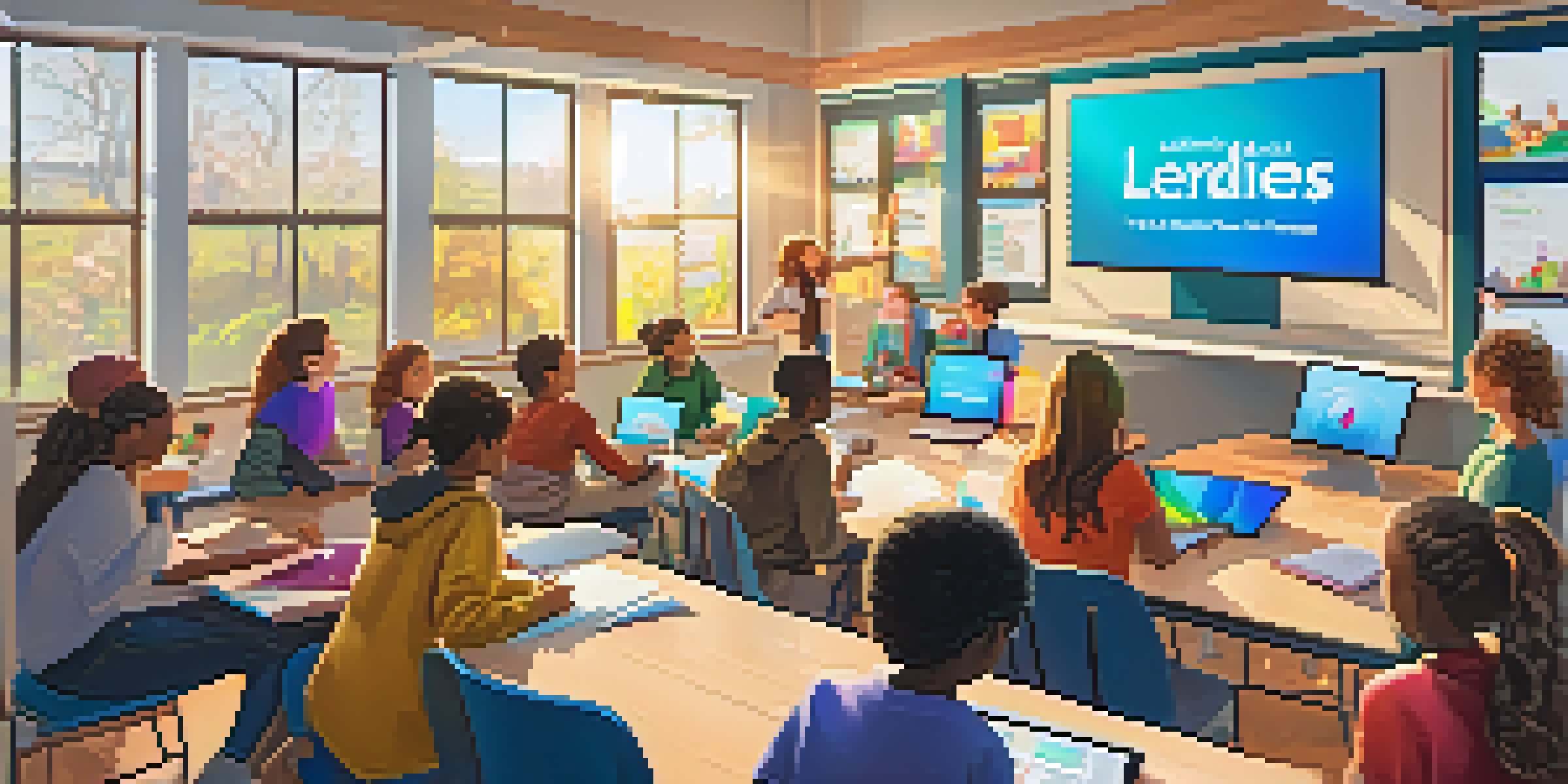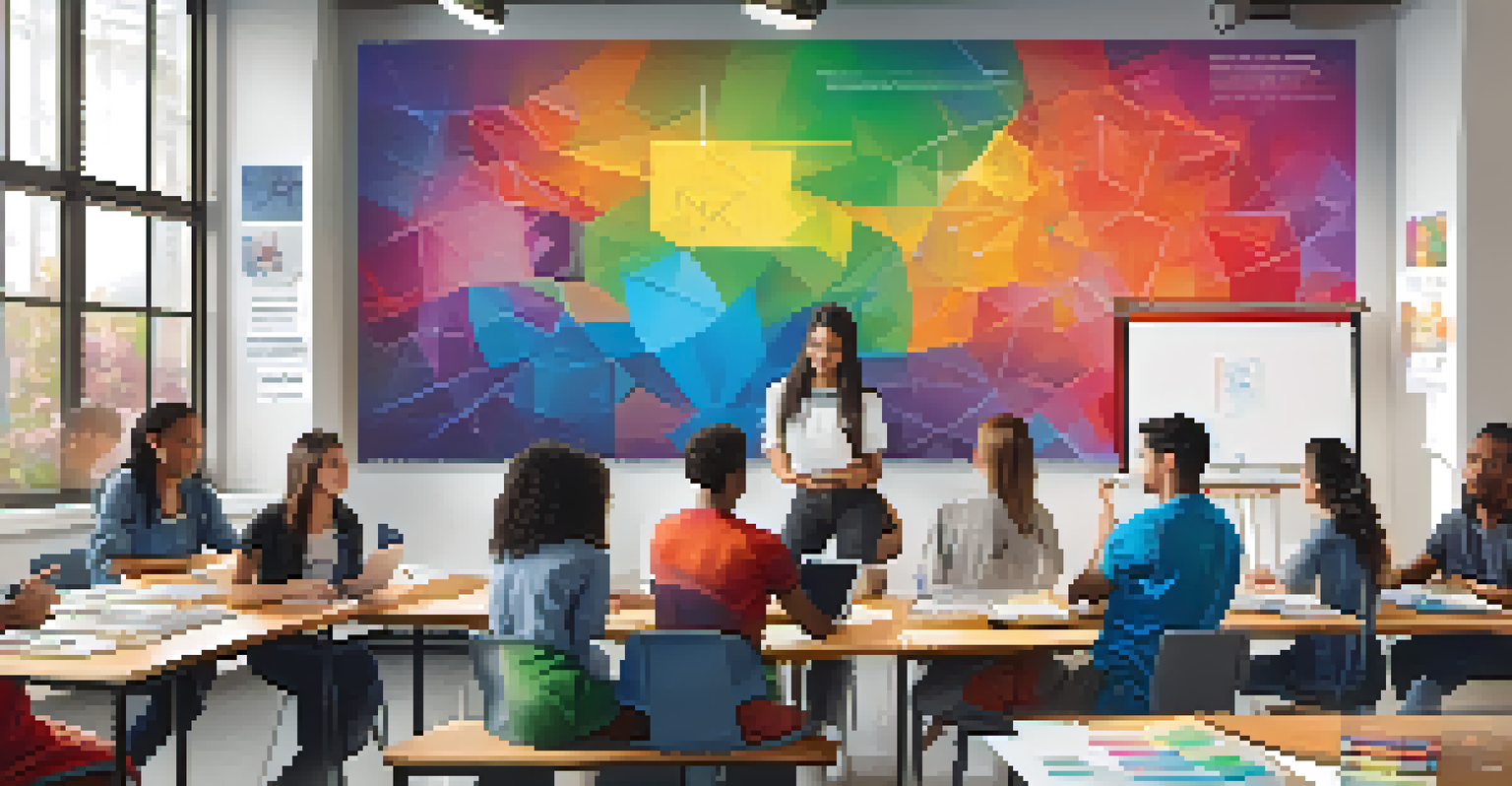Benefits of Real-Time Learning Activities in Online Classes

Enhanced Engagement Through Interactive Learning
One of the standout benefits of real-time learning activities is the boost in student engagement. When learners participate actively with their peers and instructors, they feel more connected to the material. This interaction often leads to a richer learning experience, where students are not just passive recipients of information.
Education is not the filling of a pail, but the lighting of a fire.
Imagine a virtual classroom where students can raise their hands, ask questions, and contribute to discussions in real-time. This dynamic environment mimics traditional classroom settings, allowing learners to express their thoughts and curiosity immediately. It transforms the learning experience from a solo endeavor into a collaborative journey.
Moreover, engagement isn't just about participation; it also fosters motivation. When students see their contributions valued in real-time discussions, they are more likely to invest effort and interest in their studies, making learning not just effective but enjoyable.
Immediate Feedback for Continuous Improvement
Real-time learning activities provide students with immediate feedback, a crucial element for effective learning. Unlike traditional methods where feedback can take days to receive, instant responses allow learners to identify areas for improvement right away. This timely input can significantly enhance retention and understanding of concepts.

For example, think of a live quiz where students answer questions and receive instant grading. They can immediately see what they got right or wrong, allowing them to address misconceptions on the spot. This adaptability in learning creates a more personalized experience, catering to individual needs.
Boosting Student Engagement
Real-time learning activities enhance student engagement by fostering active participation and collaboration among peers and instructors.
Additionally, instructors can adjust their teaching strategies based on real-time feedback from students. If a concept isn't resonating, they can pivot and explain it in a different way, ensuring that all learners are on the same page. This responsiveness is a game-changer in the online education landscape.
Building a Sense of Community Among Learners
One of the challenges of online learning is the feeling of isolation. However, real-time learning activities can bridge that gap by fostering a sense of community among students. Engaging in discussions, group projects, or interactive activities helps build relationships that enhance the learning experience.
The beautiful thing about learning is that no one can take it away from you.
Think of it like a virtual coffee break; students share ideas, laugh, and learn from one another. These connections not only make learning more enjoyable but also provide vital support systems. When learners feel they are part of a community, they are more likely to stay committed to their studies.
Furthermore, collaboration during real-time activities encourages diversity of thought. Students bring different perspectives to the table, enriching discussions and promoting a deeper understanding of the material. This communal approach can lead to more creative solutions and innovative ideas.
Flexibility to Cater to Different Learning Styles
Real-time learning activities offer the flexibility needed to accommodate various learning styles. Some students thrive in interactive environments, while others may prefer more structured formats. By incorporating different types of activities, educators can cater to a wider range of preferences and needs.
For instance, a teacher might use breakout rooms for group discussions, visual aids for visual learners, and hands-on activities for kinesthetic learners. This versatility ensures that all students have the opportunity to engage with the material in a way that resonates with them. It's like having a buffet of learning options!
Immediate Feedback Benefits
Instant feedback from real-time activities allows students to quickly identify areas for improvement, enhancing their learning experience.
Ultimately, this adaptability not only enhances comprehension but also promotes inclusivity. When students see that their unique learning styles are acknowledged, they are more likely to participate actively and feel valued in the classroom.
Encouraging Critical Thinking and Problem Solving
Real-time learning activities often require students to think on their feet, promoting critical thinking and problem-solving skills. By engaging in discussions or collaborative projects, learners must analyze information quickly and articulate their thoughts effectively. This dynamic environment fosters higher-order thinking, which is essential for academic success.
Consider a scenario where students are presented with a real-world problem during a live session. They must work together to brainstorm solutions, weighing various options and debating their merits. Such exercises not only challenge their intellect but also prepare them for real-life situations where quick decision-making is crucial.
Furthermore, this kind of engagement cultivates a growth mindset. Students learn that it’s okay to make mistakes and that each error is an opportunity for learning. This shift in perspective can lead to greater resilience and the ability to tackle future challenges with confidence.
Real-World Application of Knowledge
Real-time learning activities often emphasize the practical application of knowledge, bridging the gap between theory and practice. When students engage in activities that simulate real-world scenarios, they can see the relevance of what they are learning. This connection boosts motivation and reinforces the importance of their studies.
For example, a business class that conducts live role-playing scenarios equips students with skills they can apply in internships and future jobs. This hands-on experience is invaluable, ensuring that learners are not just memorizing facts but are also prepared to use their knowledge in practical settings.
Fostering Community and Inclusivity
Interactive learning environments build a sense of community and inclusivity, breaking down barriers and enriching the educational experience for all students.
Moreover, instructors can tailor activities to reflect current industry trends, keeping the curriculum relevant and engaging. By integrating real-world applications, educators provide students with a clearer path to their future careers, enhancing the overall value of their education.
Increased Accessibility and Inclusivity
Real-time learning activities enhance accessibility and inclusivity in education. With online platforms, students from diverse backgrounds and locations can participate in the same class, breaking down geographical barriers. This democratization of education allows for a richer tapestry of perspectives and experiences.
Imagine a classroom where students from different countries collaborate on projects. They bring unique cultural insights that enrich discussions and broaden everyone's understanding of the subject matter. This diversity not only enhances learning but also prepares students for a globalized world.

Additionally, many online platforms offer features such as closed captioning and screen sharing, catering to students with different abilities. This commitment to inclusivity ensures that every learner has the opportunity to thrive, creating a more equitable educational landscape.